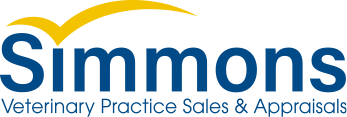This article was co-authored by Sherry Everhart, CVT, CMA and David King, DVM, CVA.
As a veterinarian in private practice, you essentially have two choices: work for someone else or work for yourself. While ownership provides the opportunity for greater reward, it also comes with a greater responsibility and a greater risk.
Why Buy a Veterinary Practice?
There are obvious rewards in being the employer. Overall, the employer role offers you the greatest level of control over your working experience. You get to choose the type of medicine, the practice culture, the standards of care, the schedule you want to keep, and the team you want to work with in your practice. Intrinsically, many practice owners receive tremendous satisfaction in being a valuable member of their local business community.
Practice ownership also provides greater financial rewards. As the owner, you are entitled to receive three streams of income: 1) compensation for your efforts as a veterinarian, 2) compensation for the role of leading the practice, and 3) the practice profits. For a veterinarian with education debt, this additional compensation is a boost to being able to pay down that debt much more quickly than you could as an associate.
Finally, a financially healthy practice can offer an owner a much more valuable future. Let’s assume you are employed as an associate working for an annual salary of $125,000. You are able to pay your bills and invest about $20,000 annually, getting an average return of 8%.
You are presented with an opportunity to purchase a practice at a price of $800,000 that is grossing $1,000,000 in revenues. We’ll assume that the owner’s production in the practice is approximately $600,000 of the revenues with the remaining amount produced by other professional staff. We’ll further assume that the financing for the practice will be a 10-year loan at a 6.5% interest rate.
Based on the profession’s standards, as a percent of production, the owner’s salary for their efforts as a veterinarian would approximate the same $125,000 that you earn as an associate, so you are still able to pay your bills and invest the $20,000.
You are also entitled to an additional 1–2% of gross revenues for your leadership role in the practice or about $10–$20,000 that can be put towards further paying down any personal debt or living expenses.
In a fair market purchase, the profits of the practice will go towards paying the debt for the practice over a 10-year term. Let’s look at the 10-year mark after the debt is paid off…
Associate – After 10 years:
Investment/Savings: $262,295 ($20,000/year at a return of 8%/year)
Equity: $0
Net Worth: $262,295
Owner – After 10 years:
Investment/Savings: $262,295 (as above)
Equity: $975,195 (assumes a conservative 2% growth in value each year)
Net Worth: $1,237,490
In just 10 years, your net worth will be almost 5 times what it would be as an associate.
Also keep in mind that after 10 years, the principal and interest payments (~$109,000) that were going to the bank are now coming to you. And hopefully, you’re in less personal debt due to the added management compensation that you received.
While the numbers look good, it is important to not forget about the risks that can come with practice ownership.
Depending on the effectiveness and efficiency of the practice’s management processes, the time that the owner must invest in management oversight will be greater. There is also the financial risk involved with meeting the debt obligations. Finally, there is the added responsibility that comes with ownership for the well-being of the practice, including the clients and the practice team.
Fortunately, there are ways to mitigate these risks. Purchasing a well-established hospital generally has less risk than a start-up. Hiring a knowledgeable and effective practice manager can be a great asset in helping create and maintain the practice’s processes and systems so that the owner’s time spent in management is minimized. Finally, having a thorough purchase feasibility analysis before purchasing a practice can help ensure the purchase terms are fair and reasonable to reduce the financial risk of overpaying for a particular practice.

Practice Ownership? Yes, You Can!
Join Simmons & Associates’ David McCormick for a discussion on best practices when buying a veterinary practice. We will dive into the entire process from finding a practice through to closing on the transaction and starting the transition.
How to Find & Buy a Practice
The first step in becoming an owner is to actually start looking at practices long before you plan to buy. Although everyone is familiar with the concept of “window shopping,” many fail to realize its importance in the context of a veterinary practice acquisition. Trade journals, postings at veterinary conferences, and veterinary practice brokers routinely list practices for sale. Get your name on a number of brokers’ lists of potential buyers so that you can be the first to be informed of promising opportunities.
By paying attention to the practices that come on the market, you can get a better sense of the types of opportunities you are attracted to, the general availability and price range of those practices, and the veterinary practice market overall. Sometimes, the most helpful education occurs through the simple process of just looking around.
If you are buying the practice where you are working, you should start paying attention now to how the current owner(s) are managing the practice and the team. Request to be involved in the decision-making. Note what you like about what the owner(s) do and what they do not do. This is a prime opportunity for on-the-job owner training.
It’s important to find the right practice, not the “right now” practice. Consider your professional goals. What clients do you want to serve? What type of community do you want to live in? What type of services would you like to provide? What is your standard of care? How many competitors are already in the area you want to practice that might limit the practice’s growth potential? Can you broaden your geographic search area to take advantage of a better opportunity?
Be open to considering smaller practices for sale. These often come at a lower price with an established client base, an experienced team, and often with tremendous growth potential that provides a greater return in the long run on the initial investment.
The Purchase Process for Buying a Veterinary Practice
Once you have found the right practice, it is time to start your due diligence and truly assess the purchase opportunity.
The initial financial due diligence step is to determine whether the asking price is reasonable enough to warrant further consideration. While you could have your own practice appraisal performed, if the result is different from the seller’s price, the negotiations are based on differing opinions which may not be productive. You also do not learn much during the appraisal process, other than the value conclusion.
It is the responsibility of the owner to have an appraisal done to set the price. It is the buyer’s responsibility to “test” the price. As mentioned above, the best way to test the price is to have a feasibility analysis performed. A properly done feasibility analysis should answer the questions, “Is there adequate cash flow to fund this deal?” and “Can I afford this purchase opportunity?”
It takes into consideration the practice’s projected revenues, operating expenses, capital expenditures, tax liabilities, and debt payments. Anyone who purchases a business without an appreciation of how each of these elements will impact their cash flow is essentially “flying blind.”
If the result of the analysis is that the purchase price is not feasible, then it’s time to negotiate — and the negotiation is based on the facts of the practice’s financial data. Only when the agreed-upon purchase price is determined to be feasible should the transaction move forward.
The next steps involve finding a veterinary lender and a veterinary attorney. It’s best to reach out and “interview” more than one. The purchase process can be a lengthy one and one that can be quite emotive for all. It’s important that you have a comfortable line of communication with your advisors. It’s to your advantage to find ones that are veterinary-specific or are very experienced in veterinary practice sales and already familiar with what’s typical in a veterinary transaction.
Many buyers will start with the veterinary lenders to make sure that they can get the financing. Once you have the financing, you can then engage your attorney to move forward.
The veterinary lenders will request financial data on both you and the practice. Their approval will be based on the combination of the two, and they will only provide you with a financing proposal if the cash flow works to pay the purchase debt and protect your household.
Many prospective buyers fear that they will not be able to buy a veterinary practice because they still have large student debt obligations and/or have no meaningful savings. The reality is that a large percentage of successful practice buyers have faced those same challenges. But in many cases, they have had another important “asset” — a high credit score. Although the dynamics of veterinary financing are always in a state of flux — with interest rates and loan terms constantly changing — people who have established good credit are well-positioned to capitalize on the acquisition opportunities available.
Once the financing is confirmed, your veterinary attorney will prepare your formal offer which is known as a letter of intent. This document details the terms of your offer to purchase the practice including the description of the practice, the offering price and what it includes, the period of due diligence, financial terms, any employment agreements, and the projected closing date. Often the letter of intent includes an exclusivity clause that prohibits a buyer from approaching other sellers, or the seller from pursuing other buyers during the period of due diligence. This document confirms that both the buyer and the seller must agree on the deal before it can proceed to the full sale agreement.
After the letter of intent is accepted, it’s time for your attorney to draft the asset purchase agreement. This is a formal contract that details the legally binding terms of the transaction. One key element of this contract involves the owner’s commitment not to compete with the practice. The specific terms can vary depending on the type of practice (mixed, companion, specialty, rural/urban) and is where experienced advisors are integral in establishing standards that are fair both to you and the previous owner.
While the attorneys work on the purchase documents, it’s time for you to do more due diligence. This means doing more work on assessing the practice. This is when you review more in-depth details of the practice’s management and operations. You’ll need to assess the practice’s productivity, its fee schedule, and the practice’s historic and current financial statements. You’ll also want to review what equipment is available, its condition, and the quality and experience of the practice team.
If the practice real estate is also being purchased, a building inspection and appraisal will need to be completed. If the practice real estate is being leased, then a new lease will have to be negotiated — be mindful that the practice price is contingent on a determined rent expense. If the new lease is not in line with this amount, the purchase price of the practice may need to be adjusted.
The typical timeline between the letter of intent and closing is usually 2–4 months. A buyer should avoid making life-changing decisions until closing. An unscrupulous seller can take advantage of an overly eager buyer who quits their job, sells their house, or purchases a new house before the terms of the purchase agreement are finalized. An aggressive seller might raise the purchase price and/or be less willing to negotiate reasonable terms if they know that the buyer is dependent on the purchase being finalized. It is unwise from a negotiation standpoint and will cause undue stress to a buyer and their family if they put themselves in a position where they have to accept unreasonable contract terms because they have made major life decisions in reliance on completing the practice purchase.
How to Prepare for Vet Practice Ownership Now
While you are considering ownership or are looking for the “right” practice to purchase, you can be preparing yourself for ownership. This means developing your business and leadership skills.
One of the biggest points of frustration for practice owners is managing their team. An engaged team requires having a leader that properly motivates them, can successfully mediate conflicts, and can effectively mentor talent so that the “right butts” are filling the “right seats” in the practice. An engaged team is more productive and experiences less turnover which helps ensure the practice’s optimal financial performance. This also translates into fewer management headaches for owners.
Keep abreast of evolving changes in the fields of human relations, the legal environment, general business skills, and marketing.
All of the above are frequent topics of the management tracks at most veterinary conferences and can be found online as well. If practice ownership is in your future, attending these tracks in preparation will serve you well.
You might also consider joining the Veterinary Hospital Managers Association, an organization devoted to best practices in hospital management that offers the industry’s highest-level certification program for practice management. Members have access to many online resources to help owners and managers.
A successful practice purchase is a life-changing event for all involved. It is worth making the time to carefully plan your ideal purchase and then a backup plan or two. All involved should make decisions with full knowledge of the relevant facts and have a plan that, once put into place, will get you where you want to be, when you want to be there.



